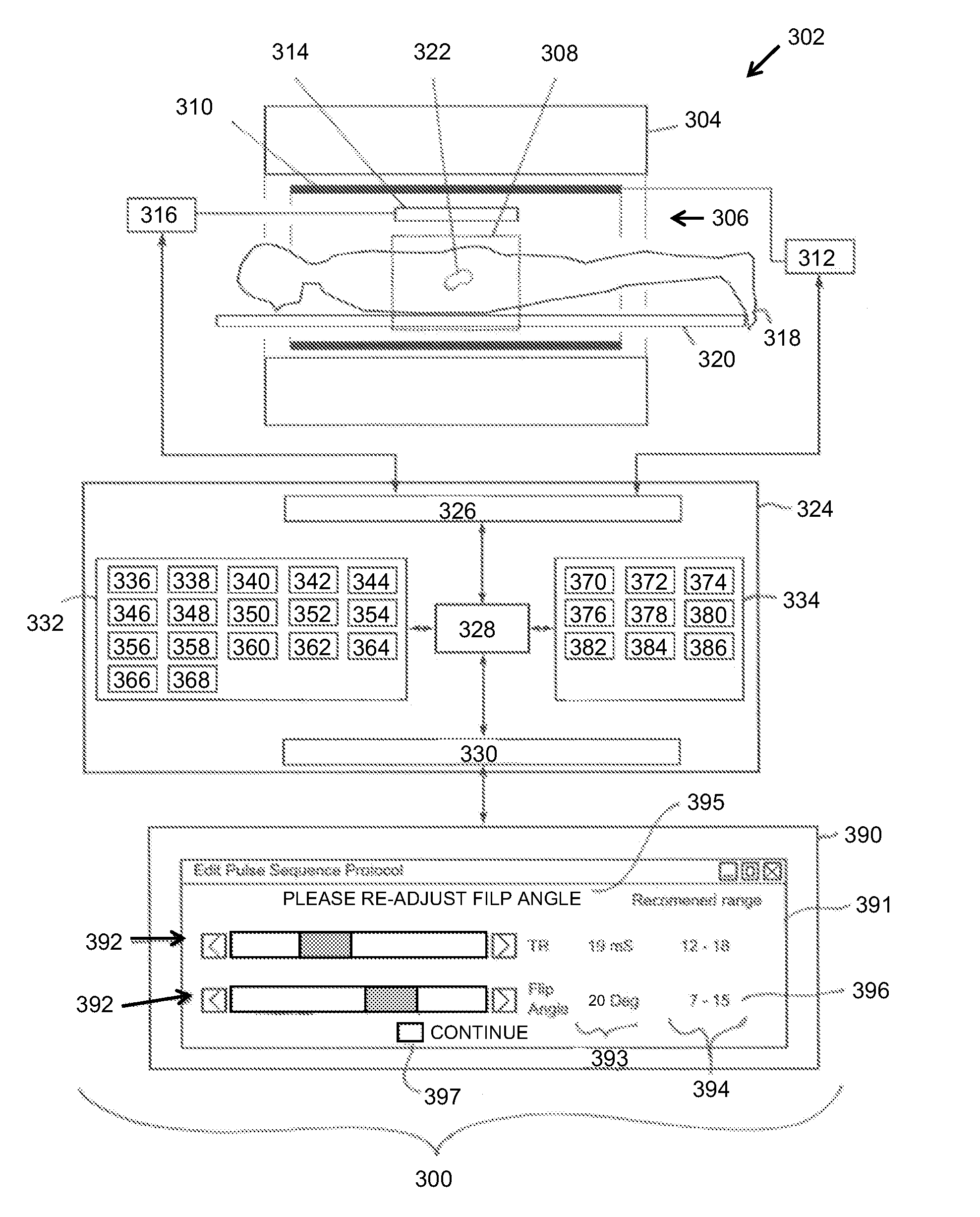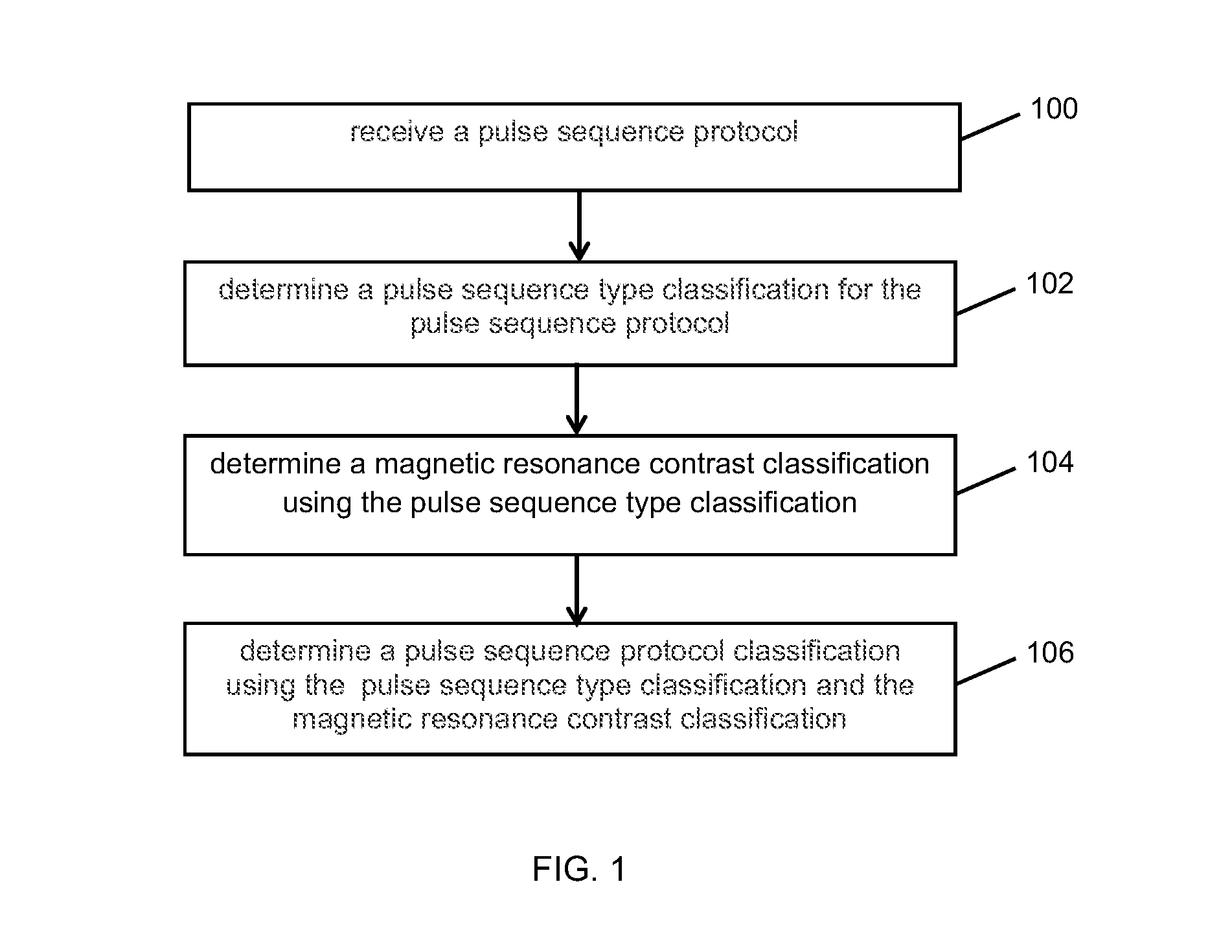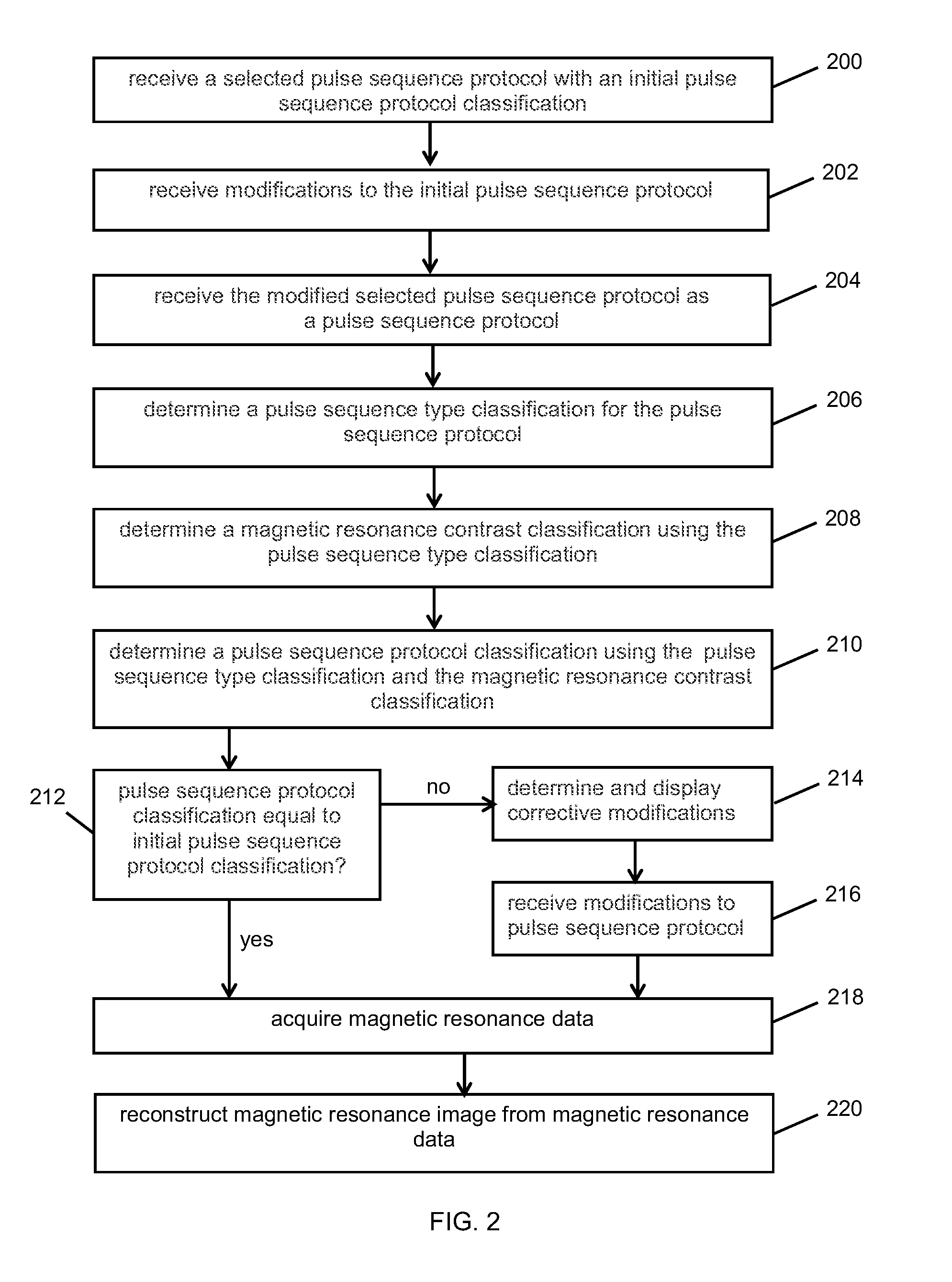Determination of a magnetic resonance imaging pulse sequence protocol classification
a technology of magnetic resonance imaging and protocol classification, applied in the field of magnetic resonance imaging, can solve the problems of lack of operator guidance in the design mode of pulse sequence protocol, the definition of protocol is not done using context, etc., and achieves the effect of facilitating the comparison of magnetic resonance images and facilitating the use of diverse magnetic resonance images
- Summary
- Abstract
- Description
- Claims
- Application Information
AI Technical Summary
Benefits of technology
Problems solved by technology
Method used
Image
Examples
Embodiment Construction
[0088]Like numbered elements in these figures are either equivalent elements or perform the same function. Elements which have been discussed previously will not necessarily be discussed in later figures if the function is equivalent.
[0089]FIG. 1 shows a flow diagram which illustrates a method according to an embodiment of the invention. In step 100 a pulse sequence protocol is received. In step 102 a pulse sequence type classification is determined for the pulse sequence protocol. Next in step 104 a magnetic resonance contrast classification is determined using the pulse sequence type classification. Finally in step 106 a pulse sequence protocol classification is determined using the pulse sequence type classification and the magnetic resonance contrast classification.
[0090]FIG. 2 shows a flow diagram which illustrates a method according to a further embodiment of the invention. In step 200 a selected pulse sequence protocol with an initial pulse sequence protocol classification is...
PUM
 Login to View More
Login to View More Abstract
Description
Claims
Application Information
 Login to View More
Login to View More - R&D
- Intellectual Property
- Life Sciences
- Materials
- Tech Scout
- Unparalleled Data Quality
- Higher Quality Content
- 60% Fewer Hallucinations
Browse by: Latest US Patents, China's latest patents, Technical Efficacy Thesaurus, Application Domain, Technology Topic, Popular Technical Reports.
© 2025 PatSnap. All rights reserved.Legal|Privacy policy|Modern Slavery Act Transparency Statement|Sitemap|About US| Contact US: help@patsnap.com



